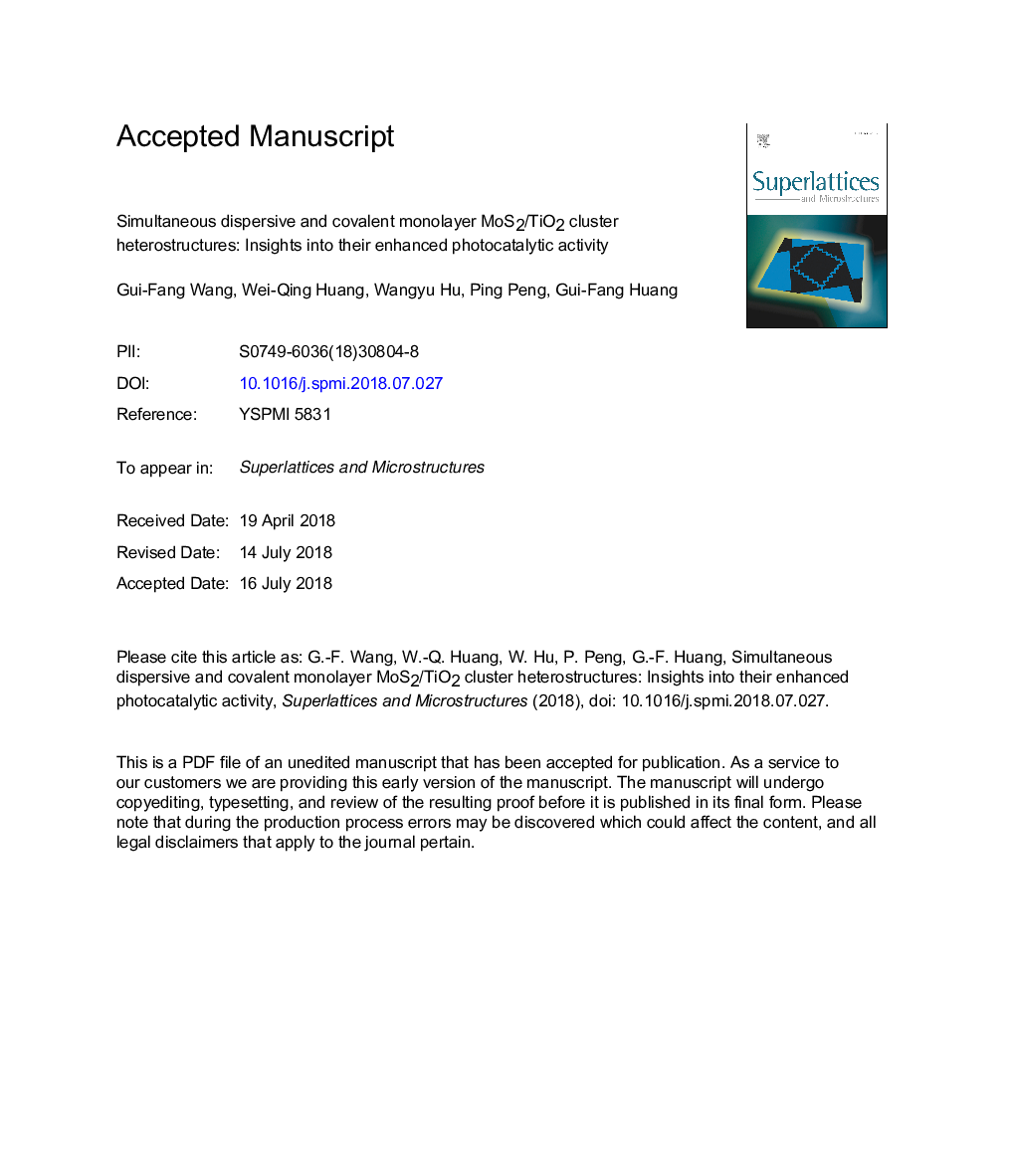| Article ID | Journal | Published Year | Pages | File Type |
|---|---|---|---|---|
| 7938441 | Superlattices and Microstructures | 2018 | 28 Pages |
Abstract
Tuning electron transfer at interface, largely depending upon interfacial interaction, is paramount to rationally designing nanoscale heterostructures with desirable performance for future electronics, optoelectronics, and solar energy conversion. Here, we explore the interfacial interaction between monolayer MoS2 and TiO2 cluster to elucidate the mechanism of the enhanced photocatalytic activity of their hybrids. It is firstly revealed that both dispersive (van der Waals forces) and covalent interactions can simultaneously exist in the monolayer MoS2/TiO2 cluster heterostructures, which depends on their relative orientations. The Ti-S and O=S bonds in covalently bonded heterostructures and flat bands in noncovalent heterostructures lead to an effective separation of photoexcited charge carriers between two constituents, therefore enhanced photocatalytic activity. The small band gap enables the MoS2/TiO2 cluster heterostructures having strong optical absorption in the whole visible light. Moreover, the Mo and S atoms at basal plane, which are catalytically inert, turn into catalytic active sites, making the monolayer MoS2 to be a highly active co-catalyst. These findings disclose the elusive microscopic mechanism behind the enhanced photocatalytic activity of MoS2/TiO2 hybrids, and provide a systematic step towards a better understanding of interfacial interaction in layered MoS2-based heterostructures.
Related Topics
Physical Sciences and Engineering
Materials Science
Electronic, Optical and Magnetic Materials
Authors
Gui-Fang Wang, Wei-Qing Huang, Wangyu Hu, Ping Peng, Gui-Fang Huang,
